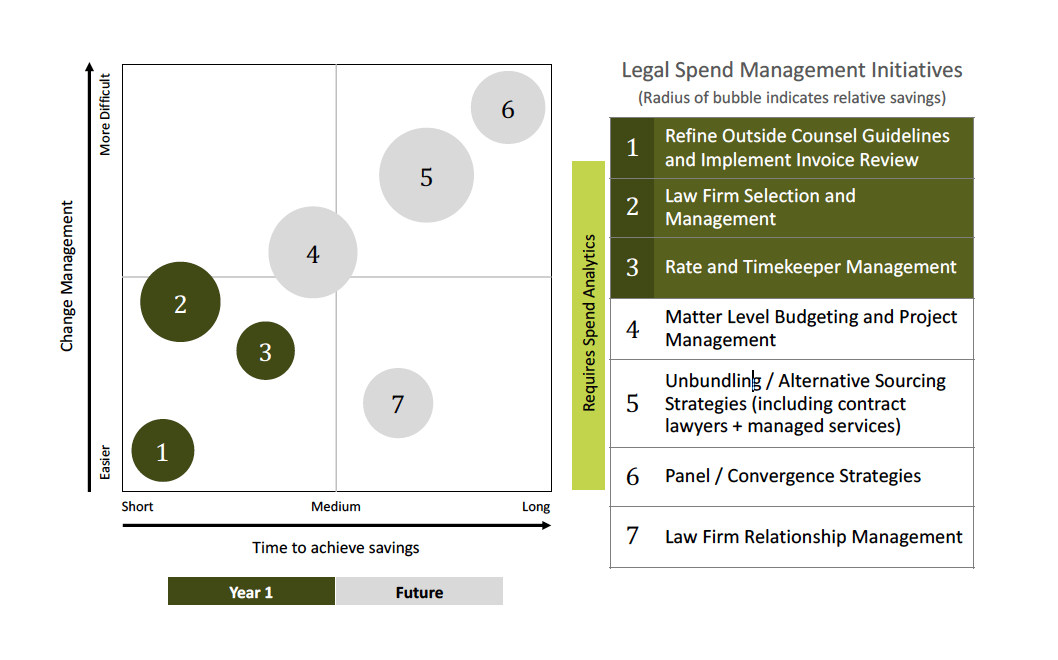Excerpt from The Ultimate Guide to Legal Spend Management
December 03, 2019
legal spend Elevateflex whitepaper
The following is an excerpt from the Legal Spend Management Primer, published in collaboration with Buying Legal Council.
Law departments today have to find ways to manage and reduce legal spend without a negative impact on the quality of advice received or the achieved outcomes. Which initiatives will bring the fastest results, best outcomes, and cause the least disruption (and take less convincing of stakeholders)? In this Primer, Peter Eilhauer and Matt Todd of Elevate introduce the Legal Procurement Matrix and detail the pros and cons of different cost-savings initiatives. They show how you should prioritize and strategically approach legal spend management.
Legal Spend Under Management & The Legal Procurement Matrix
Traditionally, law departments take a “Passive” Management approach to legal spend: They develop and deploy policies and procedures that encourage self-regulation of spend management, but take little direct influence on benefits and savings. “Active” Management means the law department (with legal procurement’s help) actively engages with outside counsel to ensure policies and procedures are followed while benefits and savings are realized. “Collaborative” Management goes a step further and includes developing shared accountability between outside counsel and in- house lawyers to deliver innovative solutions. There are many Legal Spend Management initiatives that law departments can undertake, ranging from simple process or policy changes to more complex and comprehensive programs. Each initiative can deliver cost savings for the company and offer certain performance benefits. Different initiatives also have varying time horizons and may be better suitable for certain organizations and cultures than others. We use the Legal Procurement Matrix to map different initiatives by:
- Time to Achieve Benefits: Strategies in the left quadrants typically realize benefits more quickly than strategies in the right
- Change Management Requirements: Strategies in the bottom quadrants tend to be easier to deploy – either technically or politically – than strategies in the top quadrants.
- Benefit Opportunity: Larger bubbles show strategies that are more likely to deliver greater cost savings than strategies indicated by smaller
Such a mapping exercise will help you prioritize your Legal Spend Management (LSM) Initiatives. We have included a number of common LSM initiatives in the below matrix as an example of such a mapping exercise:

This is an excerpt from the Legal Spend Management Primer, published by Buying Legal Council. Download the entire Primer for free on the Buying Legal Council website
Back to Expertise
 Peter Eilhauer
Peter Eilhauer
